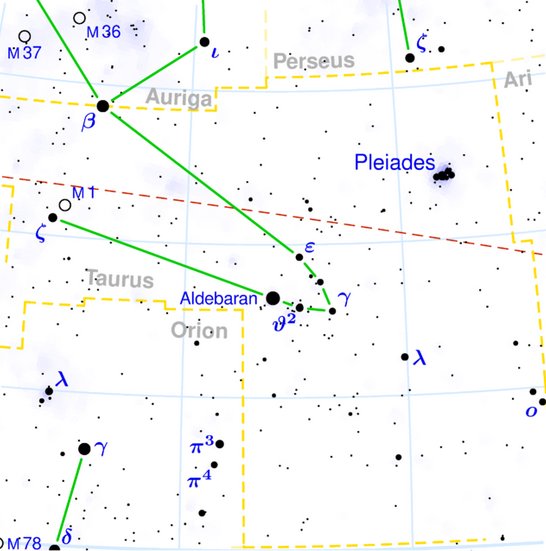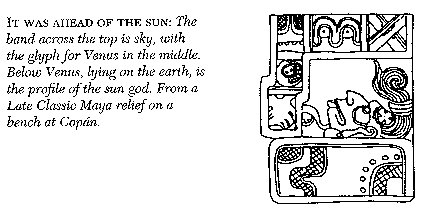4. From Hyadum II (δ Tauri) to Wasat (δ at the bifurcation point of Pollux) there were 125 - 80 = 45 right ascension days (and 365 - 45 = 320 = 5 * 64).
I have used CAPITAL letters for the dates at the time when Hyadum II was at 0h. These dates were 64 precessional days earlier than the corresponding dates at the time of rongorongo and 60 precessional days earlier than those at the time of the Pope. The stars rising with the Sun in MARCH 21 were the same as those rising with the Sun in May 24 (at the time of rongorongo) respectively in ░May 20 (when the Pope Gregory XIII presented his calendar). In the Golden Age of the Bull, i.e. ca 64 * 71 = 4544 years before the time of rongorongo or around 2700 B.C. - the time of the great pyramids in Egypt and the great Stonehenge monument -
the origin of the summer half of the year was where the Sun rose together with Hyadum II (δ) in the early morning in the day before heliacal ε (and θ) Tauri:
The Pleiades (represented by Alcyone, the Queen of Sailing) came 8 days earlier, a fact which resembled how there were 8 dark nights for Venus before she emerged again as Morning Star.
The glyph at Ain (ε Tauri) could illustrate the path down from the Pleiades and up again in a curve to the point where the Horns of the Bull were growing out from his head:
The following glyph person has in his right hand (at left = in the past when time was running towards the right) a string with a pair of 'pearls', viz. ε (Ain, the Eye) and θ - the twins θ╣ and θ▓ rose together in the same day:
A pair of suitable stars which rose together in the night could have been used for locating the vertical orientation of the sky, similar to how a plumbline was used:
|
||||||||||||||||||||||||||||||||||||||||||||||||||||||||||||||||||||||||||||||||||||||||||||||||||||||||||










